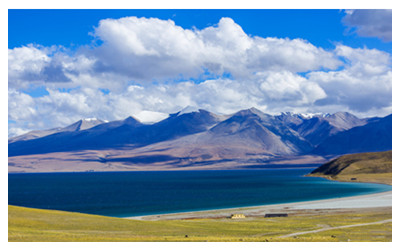Skype: neodalle-travel
Tel: +86 135 7447 2266
E-mail: sales@visitaroundchina.com
 Manasarovar Lake, meaning “Invincible Jasper Lake” in Tibetan, is located in Burang County, Ngari Prefecture of Tibet and 30 kilometers southeast of Mount Kailash. With an altitude of 4,588 meters, it is one of the highest freshwater lakes in the world and the clearest lake in China. It is also renowned as one of three holiest lakes in Tibet. Buddhists believed that the Mansarovar Lake is a treasure given by the Buddha and that can cleanse the filth of their skin and in their inner hearts, and prolong their lives. Therefore a lot of believers circumambulate the lake or bath in the lake.
Manasarovar Lake, meaning “Invincible Jasper Lake” in Tibetan, is located in Burang County, Ngari Prefecture of Tibet and 30 kilometers southeast of Mount Kailash. With an altitude of 4,588 meters, it is one of the highest freshwater lakes in the world and the clearest lake in China. It is also renowned as one of three holiest lakes in Tibet. Buddhists believed that the Mansarovar Lake is a treasure given by the Buddha and that can cleanse the filth of their skin and in their inner hearts, and prolong their lives. Therefore a lot of believers circumambulate the lake or bath in the lake. Manasarovar Lake is praised as a Holy Lake in Tibet. There are many stories and mysteries behind Lake Mansarovar. The best-known Lake Mansarovar stories and mysteries are the below two. Recorded in ancient Tibetan literature works, there was a dragon palace in the lake collecting countless treasures. As long as the pilgrims could get a small fish, stone, a bird’s feather or walk around the lake, they might live a rich and happy life. In Indian mythology, the Brahma the creator and his wife often bathed here so the lake became the holy lake.
With a transparency of up to 14 meters, Lake Manasarova is the clearest lake in China. The water is extremely clear that you can see fishes swimming below a dozen meters. The holy lake has different faces in different angles: dark blue in a distance, light blue or light green when getting closer. When standing by, one will see the snow mountains in the distance, like a pretty and graceful beauty wearing a white hada, is reflected in the clear lake like reflecting on a mirror. In different times of a day, the lake is also decorated differently: by blue sky and white clouds in the daytime which seems so close that can be touched with hands; by burning clouds of pink or orange in the evening.
 Ask Questions ?
Ask Questions ?